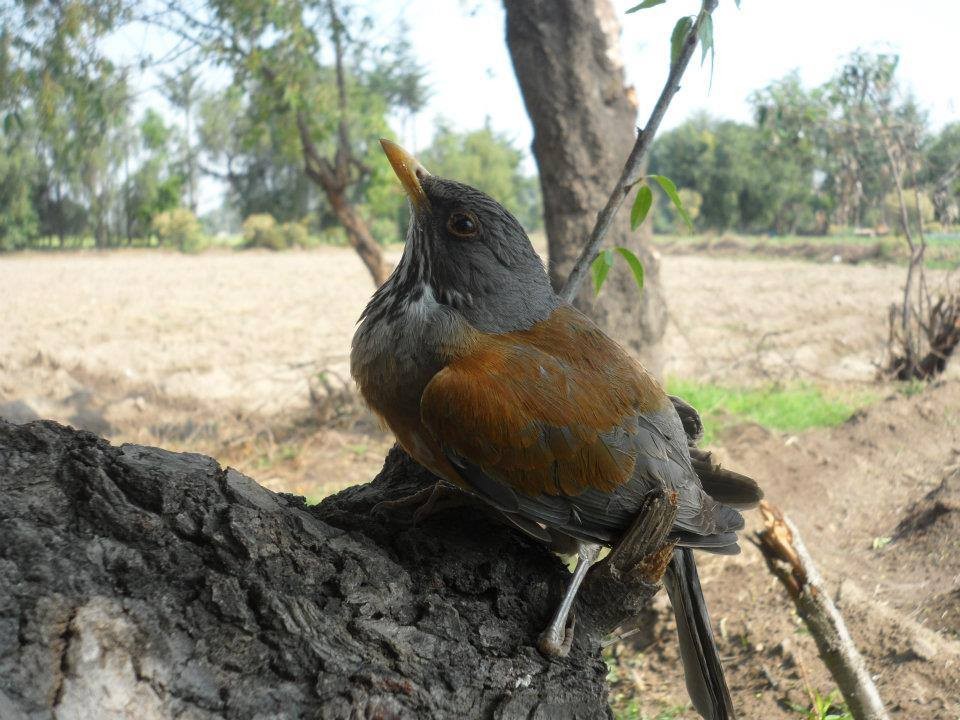Rufous-backed Robin
A species of True thrushes Scientific name : Turdus rufopalliatus Genus : True thrushes
Rufous-backed Robin, A species of True thrushes
Botanical name: Turdus rufopalliatus
Genus: True thrushes
Content
Description General Info
 Photo By Palmarito Tochapán , used under CC-BY-SA-4.0 /Cropped and compressed from original
Photo By Palmarito Tochapán , used under CC-BY-SA-4.0 /Cropped and compressed from original Description
This species resembles its widespread relative the American robin in general appearance, but is a bit smaller at 21.5–24 cm (8.5–9.4 in) long, with an average wingspan of 39.4 cm (15.5 in) and weight of 74 g (2.6 oz). It is named for the adult's rufous or olive-rufous upper back, which contrasts with the grayish head, nape, and rump. The chest and flanks are also rufous. The belly and undertail coverts are white; the throat is white with many black streaks. The bill and eye-ring are yellow. Females are typically somewhat duller-colored than males. Juveniles, like other juvenile Turdus thrushes, are spotted below; they are browner and have pale flecks above. The subspecies of the Islas Tres Marías, also found around San Blas, Nayarit, is sometimes considered a separate species, Grayson's robin or Grayson's thrush, Turdus graysoni (Ridgway, 1882). It looks "washed out", with little rufous tinting. The song is slow and warbling, with repetition of phrases. An example is "weedele loo loo freerlii..." The alarm call is a long, mellow, descending whistle, "cheeoo or teeeuu". Other calls resemble those of the American robin; the flight call is thinner. 
Size
23-25 cm (9-10 in)
Colors
Brown
Black
Red
Gray
White
Orange
Nest Placement
Tree
Feeding Habits
Rufous-backed Robin primarily consumes a wide variety of fruits. It actively forages in trees and shrubs, exhibiting a preference for feeding in the morning and evening. Notably, rufous-backed Robin possesses a flexible diet, adjusting to seasonal food availability, but shows particular favoritism for certain berries.
Habitat
Rufous-backed Robin typically inhabits the various strata of arid to semi-humid regions characterized by deciduous and semi-deciduous forests. Thorn-forests, where they are particularly abundant, and inland riparian woodlands also constitute their preferred environments. These birds can be found from the sea level up to elevations of 1500 meters, extending their range in certain islands up to 600 meters. In addition to natural habitats, rufous-backed Robin adapts to human-altered landscapes such as plantations and gardens.
Dite type
Omnivorous
General Info
Feeding Habits
Bird food type
Bird Feeder Type

Platform
Behavior
This species is shyer than the American robin. In winter it often forms flocks. The diet is typical of thrushes: fruit and invertebrates, especially insects. Reproduction resembles that of other Turdus species. The eggs are whitish with heavy red-brown markings. 
Species Status
Not globally threatened.
Scientific Classification
Phylum
Chordates Class
Birds Order
Perching birds Family
Thrushes Genus
True thrushes Species
Rufous-backed Robin